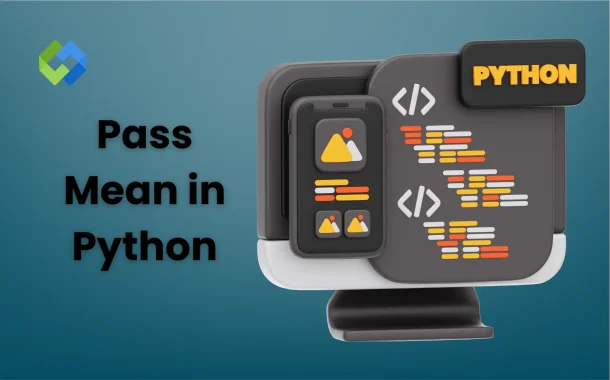For example, you might use pass in a function or loop that you plan to fill in later. It allows the program to run without errors, even if the function or loop is incomplete. pass is also useful in empty classes or exception handling blocks. It helps keep the code structure intact without adding unnecessary code.
Table of Contents
Table of Contents
When to Use the pass Statement
The pass statement in Python is used as a placeholder in your code. It allows you to define a function, loop, or class without actually implementing any functionality. This is particularly useful when you’re working on other parts of your code but want to maintain the structure of the program. By using pass, you avoid syntax errors that would occur if these sections were left empty. It lets you continue coding without interruption.
You might use pass when you’re in the process of planning or designing a program. For example, you can create an empty function or class that you intend to fill in later. This lets you keep your code organized and prevents any accidental errors from halting your progress. Similarly, in loops or conditionals, pass allows you to write code that will eventually be implemented without causing the program to break.
Another common use of the pass statement is in exception handling. When you catch an exception but don’t need to take any specific action, you can use pass to handle the error without disrupting the flow of your program. This is helpful when you want the program to continue running despite certain issues, without taking any corrective measures in that moment.
Common Use Cases for pass in Python
Empty Functions and Methods
One primary use of the pass statement is in defining empty functions or methods. If you are planning a function but haven’t decided on its implementation yet, pass allows you to define it without leaving the function body empty. This enables the program to run while you focus on the rest of the code.
Loops and Conditionals
Pass is also useful in loops and conditionals. In a loop, you might want to handle a specific case in the future, but for now, you don’t want to perform any action. You can use pass to skip that iteration without breaking the loop. Similarly, in conditionals, pass helps when no action is required for certain conditions, avoiding unnecessary code.
Exception Handling
In exception handling, pass comes in handy when you catch an exception but don’t need to perform any action. Using pass ensures the program continues running without crashing, even though an error has occurred. It allows the program to function smoothly without interference.
Empty Classes
The pass statement is also used in defining empty classes. When you need to define a class but aren’t ready to add its functionality yet, you can use pass to keep the structure intact. It helps you organize your code, allowing you to return later and fill in the details.
Difference Between pass and continue
The pass and continue statements in Python are both used to control the flow of a program, but they serve different purposes.
The pass Statement
The pass statement does nothing and is used as a placeholder in your code. It is often used in situations where a statement is syntactically required but no action is needed. For example, it can be used in empty functions, classes, or loops where you don’t want the program to do anything yet but need to maintain structure.
The continue Statement
On the other hand, the continue statement is used inside loops. When Python encounters continue, it skips the current iteration and moves on to the next one. This is helpful when you want to skip certain conditions within a loop but still continue processing the rest of the loop.
pass in Empty Functions and Loops
Pass in Empty Functions
The pass statement is commonly used in empty functions. When you define a function but haven’t decided on its implementation yet, you can use pass to avoid errors. This way, you can create the function structure and continue working on the rest of the code without having to worry about leaving the function body empty. Later, you can return to the function and add the necessary code.
Pass in Loops
In loops, pass can be used to do nothing during a specific iteration. This is helpful when you want to skip certain parts of the loop without affecting the rest of the process. For example, if you want to skip an iteration based on a condition but still continue with the rest of the loop, you can use pass.
Examples of pass in Action
1. Empty Function
When you define a function but haven’t decided on its implementation yet, pass can be used to prevent errors. It acts as a placeholder, allowing you to set up the function structure now and return to it later without causing issues in the program.
2. Empty Class
In some cases, you might define a class but not yet want to add any functionality. Using pass in the class body ensures that the class is recognized by the program without doing anything, giving you time to implement the details later.
3. Skipping Iterations in Loops
Within loops, pass can be used to skip specific iterations. If a condition is met, pass will make the program skip over that iteration and continue with the rest of the loop, without breaking the flow.
4. Exception Handling
When catching exceptions, you might want to handle the error but take no action. pass can be used in this situation to catch an error and allow the program to continue running without disruption, even if no specific action is taken for the exception.
Conclusion
The pass statement in Python is a useful tool when you need to create placeholders in your code. It allows you to write code without causing errors, even if parts of it are unfinished. You can use it in functions, classes, loops, and exception handling.
pass helps maintain the structure of your program while you focus on other tasks. It ensures your code runs smoothly without interruptions, even if you haven’t fully implemented all parts. It’s a simple yet powerful feature that helps organize and manage your code efficiently.














